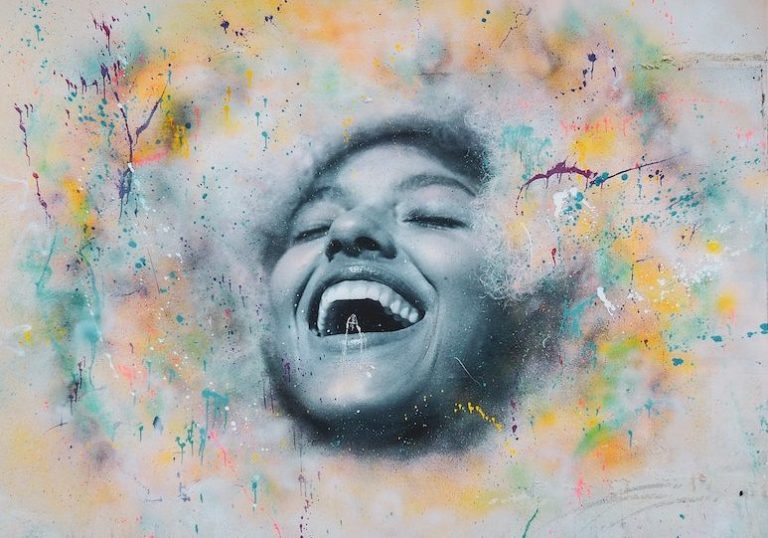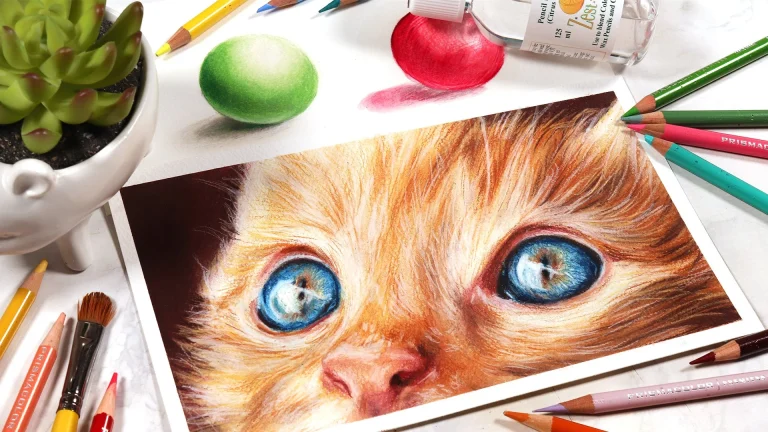Embarking on a journey into the world of Drawing Colour opens up an expansive realm of artistic expression. The vibrant spectrum of hues, tones, and shades becomes a palette for creativity, allowing artists to breathe life into their compositions. With the stroke of a brush or the glide of colored pencils, the artist can infuse emotion, depth, and personality into their artwork. Colors dance across the canvas, creating a visual symphony that resonates with the observer’s senses.
- Unleashing the Power of Drawing in Color
- How Colors Transform Your Drawings
- Techniques for Vibrant Colored Drawings
- A Guide to Drawing in Living Color
- Elevating Your Artistic Vision with Color
- Creating Joyful and Expressive Drawings
- Bringing Life and Depth to Your Drawings
- Frequently Asked Questions (FAQs)

Unleashing the Power of Drawing in Color
Unleashing the power of Drawing Colour can be a truly transformative experience. It’s like stepping into a vibrant world where your imagination explodes onto the page, breathing life into your creations in a way that black and white simply can’t match. Here’s why embracing color can be so powerful for your art:
1. Emotional Resonance: Color has a profound impact on our emotions. A fiery red can evoke passion and excitement, while a serene blue can bring a sense of calmness and peace. By using color strategically, you can imbue your drawings with specific moods and feelings, Drawing Colour viewers deeper into your artistic vision.
2. Depth and Dimension: Color is a powerful tool for creating depth and dimension in your drawings. By layering and blending different hues, you can create realistic shadows, highlights, and textures that make your artwork feel like it’s leaping off the page.
3. Storytelling Potential: Color can be used to tell a story within your drawing. A splash of contrasting color can draw attention to a focal point, while a gradual shift in hue can guide the viewer’s eye through the scene. Think of color as another language you can use to communicate your ideas and emotions.
4. Expressive Freedom: With color, the possibilities are endless! You can experiment with bold, vibrant palettes, explore subtle tonal variations, or even create surreal, dreamlike worlds where colors defy reality. Don’t be afraid to break the rules and let your creativity flow freely.
5. Joy and Excitement: Drawing Colour can be an incredibly joyful and exhilarating experience. The act of choosing and applying vibrant hues, watching your artwork come to life, and sharing it with others can bring a sense of satisfaction and accomplishment that simply can’t be replicated in black and white.

How Colors Transform Your Drawings
color! It’s the magic ingredient that breathes life into your drawings, transforming simple lines into vibrant worlds and captivating emotions. Let’s explore the incredible ways colors can elevate your art:
1. Storytelling Symphony: Colors aren’t just decoration; they’re powerful storytellers. A fiery sunset evokes passion and adventure, while a serene blue sky whispers peace and tranquility. Use color strategically to guide the viewer’s emotions, like a composer weaving a melody of moods through their music.
2. Depth and Dimension: Color is your secret weapon for creating depth and dimension. Imagine a world dipped in monochrome – everything flat and lifeless. Now, add a splash of cool shadow here, a warm highlight there, and suddenly your Drawing Colour pops off the page, inviting the viewer to step right in.
3. Spotlight Stealer: Colors have the power to direct attention like a spotlight in a theater. A pop of contrasting color can instantly draw the eye to a focal point, while a harmonious blend can lead the viewer on a gentle journey through your artwork. Use this power wisely to guide the narrative of your drawing.
4. Mood Magic: Colors are like emotional chameleons. A fiery red can ignite excitement, while a calming green whispers peace. Use color palettes to evoke specific moods in your viewer. Think cozy winter scenes bathed in warm yellows and oranges, or a thrilling chase sequence bursting with bold blues and reds.
5. Personality Palette: Colors can reveal the soul of your artwork. A vibrant, playful palette might speak of a whimsical spirit, while a muted, earthy one could hint at a contemplative mood. Let your color choices reflect the unique personality of your Drawing Colour and add a touch of your artistic fingerprint.
Remember, there are no right or wrong ways to use color. Experiment, have fun, and let your creativity flow! The world of color is your oyster, waiting to be explored and unleashed onto the canvas of your imagination.

Techniques for Vibrant Colored Drawings
Embrace the rainbow and bring your drawings to life with these exciting techniques:
Layering and Blending:
- Start light: Begin with light base layers of your chosen colors.
- Build intensity: Gradually add darker layers to build depth and vibrancy. Use a blending stump or your fingers to gently blend the colors for seamless transitions.
- Experiment with pressure: Varying the pressure of your Drawing Colour tool creates subtle variations in tone and adds depth to your artwork.
Color Choice and Harmony:
- Complementary colors: Opposites on the color wheel like red and green or blue and orange create a vibrant contrast when placed next to each other.
- Analogous colors: Colors that sit close together on the color wheel, like blue, green, and turquoise, create a harmonious and pleasing feel.
- Triadic harmony: Use three equidistant colors on the color wheel for a bold and eye-catching combination. Try purple, orange, and green for a tropical vibe!
Adding Texture and Dimension:
- Colored pencil hatching: Experiment with different hatching techniques, like cross-hatching and stippling, to add texture and shading to your drawings.
- Gel pens and metallic markers: Add pops of metallic shine or shimmering highlights with gel pens and metallic markers.
- Glitter glue and collage: Elevate your artwork with sparkly accents or textured elements using glitter glue or incorporating fabric scraps or other materials.

A Guide to Drawing in Living Color
Welcome to the vibrant world of Drawing Colour in living color! Get ready to ditch the monochrome and inject your artwork with an explosion of hues, textures, and emotions. This guide will be your compass as you navigate the exciting landscape of colorful creation.
1. Embrace the Power of Color:
- Evoking Emotions: Colors are emotional chameleons. A fiery red ignites passion, while a serene blue whispers peace. Use color palettes to tell stories and captivate viewers with specific moods.
- Creating Depth and Dimension: Don’t settle for flatness! Layering and blending colors creates realistic shadows, highlights, and textures, making your drawings leap off the page.
- Directing Attention: Colors are like spotlights. A pop of contrasting color instantly draws the eye, while harmonious blends guide viewers on a journey through your artwork.
2. Unleash Your Inner Color Maestro:
- Color Theory: Knowing your primary, secondary, and complementary colors is your foundation. Explore color harmonies and learn how to mix and match to create vibrant palettes.
- Experimentation is Key: Don’t be afraid to play! Try unexpected combinations, push boundaries, and discover new favorites. Happy accidents can lead to stunning results.
3. Technique Toolbox:
- Layering and Blending: Build intensity gradually, starting with light base layers and gently blending for smooth transitions. Experiment with pressure and blending tools like stumps or fingers.
- Hatching and Shading: Colored pencil hatching techniques like cross-hatching and stippling add texture and depth. Learn how to shade realistically using light and shadow play.
- Textural Delights: Don’t limit yourself to paper! Incorporate glitter glue, fabric scraps, metallic markers, or even real objects to add tactile dimension and unexpected elements.
4. Let Your Style Shine:
- Whimsical Wonderland: Embrace playful colors, swirling patterns, and fantastical creatures. Think candy cane stripes, playful animals, and a sprinkle of glitter.
- Modern Minimalism: Go for clean lines, geometric shapes, and muted palettes. Use contrasting colors for impact and create a sophisticated, contemporary vibe.
- Vibrant Explosion: Unleash a rainbow! Experiment with bold hues, neon accents, and eye-catching patterns. Let your energy and creativity burst onto the page.
Elevating Your Artistic Vision with Color
Color isn’t just a decoration in your art; it’s a powerful tool to elevate your vision and engage viewers on a deeper level. Let’s dive into techniques and strategies to make your colors sing:
Beyond Technique:
- Emotional Resonance: Think beyond aesthetics. What emotions do you want to evoke? A fiery sunset can ignite passion, while a serene blue landscape whispers peace. Use color strategically to tell a story, not just show a scene.
- Symbolism and Metaphor: Colors can hold deeper meanings. Red can symbolize passion or danger, while green can represent nature or hope. Infuse your artwork with symbolism to add layers of interpretation and intrigue.
- Composition and Focal Points: Guide the viewer’s eye with color. Use contrasting hues to draw attention to a focal point, or create a harmonious flow through subtle shifts in tone.
Deepening Your Palette:
- Go Beyond Primary Colors: Explore tertiary mixes created by combining primary and secondary colors. These nuanced shades add depth and richness to your palette.
- Analogous Harmony: Use colors adjacent to each other on the color wheel for a soothing and cohesive feel. Think turquoise, blue, and green for a tranquil ocean scene.
Pushing the Boundaries:
- Light and Shadow Play: Don’t just color, illuminate! Use warm and cool hues to depict realistic light sources, shadows, and reflections. This adds depth and drama to your artwork.
- Texture and Dimension: Think beyond flatness! Experiment with layering different mediums like colored pencils, markers, or even collage materials to create tactile textures and add visual interest.
- Negative Space: Utilize the blank space of the paper as an active element. Let it represent light, emptiness, or even silence, creating a dynamic interplay with the colored areas.
Remember:
- Practice Makes Progress: Experiment, fail, and try again! The more you play with Drawing Colour , the more comfortable and confident you’ll become in using it strategically.
- Inspiration is Everywhere: Look at nature, study great artists, and get inspired by other art forms. Open your eyes to the world of color and let it influence your own vision.
Creating Joyful and Expressive Drawings
Let’s break free from the limitations of representation and dive into the vibrant world of joyful and expressive drawings! Here are some tips to unleash your inner artist and spread smiles with every stroke:
Finding Inspiration in Joy:
- Capture the Essence, Not Just the Image: Don’t just draw a child laughing; try to capture the infectious glee in their eyes, the way their hair bounces, the sound of their laughter echoing in the lines.
- Look for Everyday Delights: Joy isn’t always grand; it’s often found in the small moments – a warm cup of coffee on a snowy morning, a playful puppy chasing its tail, the sun glinting off raindrops. Open your eyes to these simple joys and translate them onto your paper.
- Embrace Movement and Energy: Let your lines dance and swirl, your colors burst with vibrancy. Convey the feeling of joy through dynamic postures, playful shapes, and energetic strokes.
Expressing Through Techniques:
- Experiment with Color: Explore playful palettes, unexpected combinations, and bold contrasts. Let your colors sing with joy! Use bright shades for happy moments, softer hues for quiet contentment, and add unexpected pops of metallics or glitter for a touch of festivity.
- Play with Line and Texture: Ditch the straight lines and rigid outlines! Use loose, gestural strokes, playful curves, and varying thicknesses to inject personality and emotion into your drawings. Experiment with hatching, stippling, and even collage techniques to add texture and depth.
Adding Storytelling Elements:
- Focus on Details: Small details can add layers of meaning and enhance the joyful narrative. A scattering of confetti, a half-eaten cookie crumb, or a crumpled birthday hat can tell a story and draw the viewer into the scene.
- Incorporate Symbols and Metaphors: Use objects and imagery with symbolic meanings to amplify the emotional impact. A soaring bird can represent freedom, a blooming flower can symbolize hope, and a sparkling stream can evoke a sense of refreshment.
- Leave room for Imagination: Don’t spell everything out. Let viewers participate in the storytelling by providing hints and leaving space for their own interpretation. A hidden smiley face in the clouds, a barely visible footprint in the sand, or an unfinished sentence on a chalkboard can spark curiosity and invite viewers to engage with your artwork.
Remember:
- There’s No Right Way to Draw Joy: Embrace your individual style and let your own interpretation of joy shine through. The most important thing is to have fun and let your creativity flow freely.
- Don’t Be Afraid to Make Mistakes: Happy accidents are often the seeds of something wonderful. Embrace the unexpected and see where your imperfect lines and playful color choices lead you.
Bringing Life and Depth to Your Drawings
Breathing life and depth into your drawings can transform them from flat representations to captivating worlds that draw viewers in. Here are some tips and tricks to add that extra spark to your artwork:
Layering the Illusion of Reality:
- Light and Shadow Play: Identify your light source and use shading to create realistic shadows and highlights. This adds dimension and makes your drawings feel like they exist in 3D space.
- Atmospheric Perspective: As objects recede into the distance, they become lighter in value and blurrier. Use this technique to create depth in landscapes and scenes with multiple planes.
- Value Variations: Don’t rely on flat colors. Play with different shades and intensities within your chosen hues to create texture, form, and a sense of depth within individual objects.
Beyond Basic Lines and Shapes:
- Perspective Magic: Master one-point, two-point, or even three-point perspective to accurately depict buildings, roads, and other objects with receding planes. This instantly adds depth and realism to your scenes.
- Organic Flow: Avoid stiff, rigid lines. Use smooth curves, varying thicknesses, and natural imperfections to mimic the organic flow of real-life forms. This makes your drawings feel alive and dynamic.
Textures That Tell a Story:
- Hatching and Cross-hatching: These techniques use lines of varying density to create shadows, textures, and subtle tonal variations. Experiment with different angles and directions to achieve specific effects.
- Stippling and Pointillism: Building up form and shading with tiny dots can create a distinctive texture and a sense of atmospheric haze. This technique can be ideal for soft edges and delicate details.
- Mixed Media Marvels: Don’t just stick to pencils or paint! Explore incorporating charcoal, ink washes, fabric scraps, or even natural materials like sand or leaves to add unique textures and visual interest.
Remember:
- Practice Makes Perfect: The more you experiment with these techniques, the more comfortable and confident you’ll become in using them effectively.
- Study the Masters: Look at the work of artists who excel at creating lifelike and impactful drawings. Analyze their use of light, shadow, perspective, and texture to learn from their expertise.
Frequently Asked Questions (FAQs)
Practice regularly, study anatomy, observe real-life subjects, and seek feedback from other artists. Online tutorials and classes can also be valuable.
Start with quality pencils, sketchbooks, erasers, and a sharpener. As you progress, you may explore different mediums like colored pencils, markers, or digital tools.
Experiment with different techniques, subjects, and mediums. Your style will emerge over time as you incorporate elements that resonate with you personally.
Related posts:
- Cute Easy Drawings
- Oil Pastel Drawing : Mastering the Art of Oil Pastel
- Santa Claus Drawing : Tips for Drawing
- Save Water Drawing : How Art Inspires a Water-Wise Future
- Simple Drawings : Finding Beauty in Basic Lines
- Tree Drawing : A Beginner’s Guide to Drawing Trees
- Art Drawing
- Christmas Tree Drawing




















